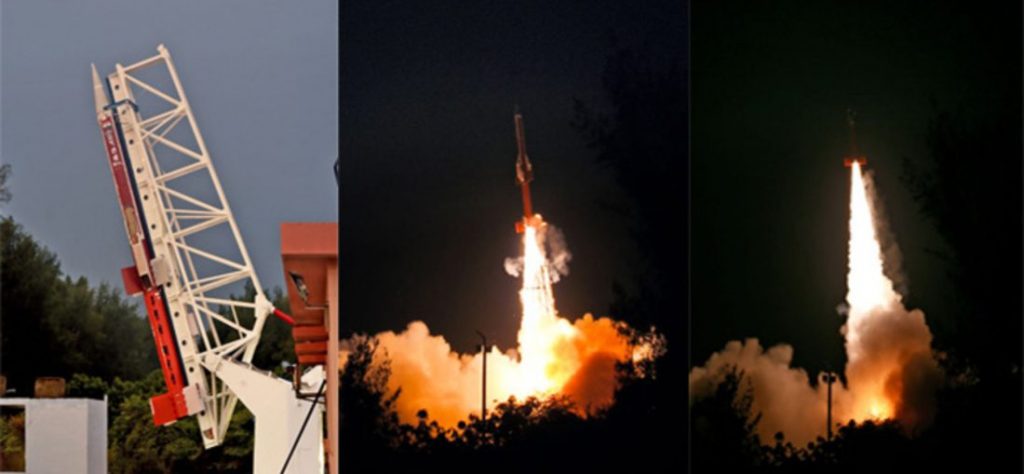The Indian Space Research Organization (ISRO) has successfully tested its scramjet engine on 28th August 2016 Sunday, in Satish Dhawan Space Centre(SDSC). The scramjet engine, also known as the air-breathing engine because of the technology it uses, was tested with the launch of a big sounding rocket.
This first experimental mission of Indian Space Research Organisation is aimed at the realisation of an Air Breathing Propulsion System which uses hydrogen as fuel and oxygen from the atmosphere air as the oxidiser.
ISRO plans to use the scramjet technology for its Avatar program.
If you look at the schematics of a Scramjet (or Supersonic Combusting ramjet), it looks pretty straight forward – air gets sucked in from the front, fuel burns in middle and exhaust gas comes out of the back generating thrust. But this is where the simplicity of the design ends. Factors like air inlet design, air compressibility, complex flows, high temperatures, fuel injection, etc – make it really difficult to design a suitable scramjet powerplant. Scramjets are highly inefficient at low speeds, with their efficiency increasing at supersonic speeds.
Why are scramjets important for ISRO?
ISRO currently uses rocket launch vehicles like the PSLV to deliver satellites into orbit. PSLVs are expendable, meaning that can only be used once, and are designed to carry both fuel and oxidizer with for launch. Scramjets use ambient air to burn fuel, thus saving the need to carry an oxidizer – thus increasing the payload of a craft. ISRO claims that using Avatar for satellite launches will cut down launch costs by half. Since there are no rotating parts in a scramjet, the chances of failure are also measurably reduced.
ISRO’s reusable launch vehicle platform, called Avatar, is a concept that is capable of carrying out satellite launches – takes off vertically and lands back on a runway. The spacecraft is designed to use ramjets and scramjets for thrust. Each of these engines will be used in different stages of the flight – with ramjet used at lower speeds, scramjet at hypersonic speeds and cryogenic engines when the craft reaches the edge of the atmosphere.
India is the fourth country to demonstrate the flight testing of Scramjet Engine.
